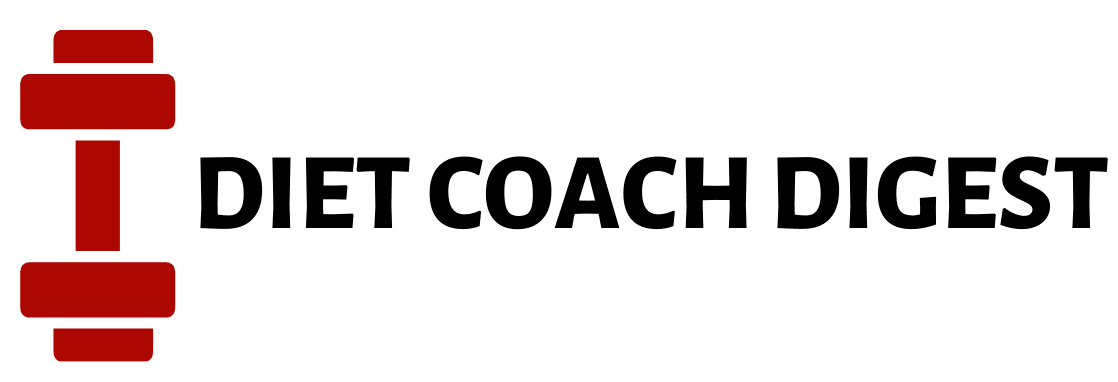Boosting Your Metabolism: The Right Way to Approach Reverse Dieting

- Should You Train To Muscle Failure Every Set? What You Need To Know - March 4, 2025
- Nutrition in a Hurry: Top Post-Workout Snacks for Active People - February 20, 2025
- 15 Healthy Meal Prep Recipes: Your Weight Loss Made Easy - February 18, 2025
Boosting Your Metabolism: The Right Way to Approach Reverse Dieting is a video that offers valuable insights on how to navigate the process of reverse dieting after a fat-loss phase. This article emphasizes the importance of reverse dieting in preventing rapid regain of fat and maintaining the new leaner physique achieved during the fat loss phase. By gradually increasing calorie intake over 4-8 weeks and making adjustments based on body weight changes, individuals can find their new long-term maintenance intake and use it for future goals like mass gaining or another fat loss phase. The article also highlights the significance of understanding macros and calories at the end of the fat loss phase, as well as estimating maintenance calories and macros at the new weight. The goal of reverse dieting is maintenance, not continued fat loss, and it helps reduce diet fatigue and prepare the body for future diet phases.

The Benefits of Reverse Dieting
Maintaining a lean physique
Reverse dieting is a crucial step to maintain the lean physique that you achieved during your fat loss phase. After weeks of hard work and discipline, it’s important to prevent rapid regaining of fat by following a structured approach to your diet. By slowly increasing your calorie intake and making adjustments based on your body weight, you can ensure that you maintain your new physique without experiencing drastic changes.
Reducing diet fatigue
Diet fatigue is a common issue after a fat loss phase, as your body and mind are exhausted from the restrictions and discipline required during the diet. Reverse dieting can help reduce diet fatigue by gradually increasing your calorie intake, allowing your body to recover and adapt to a new eating pattern. This can make future dieting phases more manageable and less mentally and physically draining.
Preparing for future diet phases
Reverse dieting is not only beneficial for maintaining your current physique, but it also prepares your body for future diet phases. By finding your new long-term maintenance intake through the reverse dieting process, you can better plan for your next mass-gaining or fat-loss phase. Understanding your macros and calories at your new weight will provide you with a solid foundation for future goals.
Understanding Your Macros and Calories
Knowing your macros and calories at the end of the fat-loss phase
Before starting the reverse dieting process, it’s crucial to have a thorough understanding of your macros and calories at the end of your fat loss phase. This requires diligent tracking and monitoring of your food intake for at least the last two weeks of the diet. Knowing your macros and calories will serve as a starting point for determining your new maintenance intake during the reverse diet.
Estimating your maintenance calories and macros at your new weight
In addition to knowing your macros and calories at the end of the fat-loss phase, you also need to estimate your maintenance calories and macros at your new weight. Online calculators or using your old maintenance calories can help provide a rough estimate of what your maintenance intake should be. This estimation takes into account the changes in your body weight and composition after the fat loss phase.
Getting Started with Reverse Dieting
Starting close to the middle between fat-loss phase calories and estimated maintenance calories
To kickstart your reverse diet, it’s recommended to start with a calorie intake that is close to the middle between your fat-loss phase calories and the estimated maintenance calories. This approach allows for a gradual increase in calorie intake without shocking your body. Starting too low or too high can disrupt the reverse dieting process and hinder your progress.
Making adjustments based on body weight changes
Throughout the reverse dieting process, it’s important to closely monitor your body weight and make adjustments to your calorie intake accordingly. If you notice that your weight is increasing too rapidly, it may be necessary to reduce your calorie intake slightly. On the other hand, if your weight is not changing or decreasing, you may need to increase your calorie intake to ensure that you are reaching your new maintenance level.
Finding Your Long-Term Maintenance Intake
The goal of reverse dieting is to find a new long-term maintenance intake
The ultimate goal of reverse dieting is to find your new long-term maintenance intake. This is the calorie and macro range that allows you to maintain your current weight, composition, and energy levels. By gradually increasing your calorie intake and closely monitoring your body’s response, you can determine the optimal maintenance intake that suits your individual needs.
Using the new intake for future goals
Once you have found your new long-term maintenance intake, you can use it as a foundation for future goals. Whether you plan to embark on a mass-gaining phase or another fat-loss phase, knowing your maintenance intake provides you with a starting point for adjusting your calories and macros to support your goals. This knowledge eliminates guesswork and helps you make informed decisions about your diet.

The Importance of Avoiding Continued Fat Loss
Maintaining a goal of maintenance rather than continued fat loss
During the reverse dieting process, it’s crucial to shift your focus from continued fat loss to maintaining your current physique. The goal is to stabilize your body weight and composition, rather than pushing for further reductions. Continued fat loss can hinder metabolic adaptations and lead to negative effects on your overall health and well-being. Embrace maintenance as a sustainable goal for long-term success.
Increasing calories to support metabolism
Reverse dieting involves gradually increasing your calorie intake to support your metabolism. By increasing your calories by about 10-15% from your fat loss phase, you provide your body with the energy it needs for various bodily functions and activities. This increase in calories helps fuel your metabolism and allows for optimal functioning and recovery.
The Gradual Increase in Calorie Intake
Gradually increasing calorie intake over 4-8 weeks
To ensure a smooth transition during the reverse dieting process, it’s recommended to gradually increase your calorie intake over a period of 4-8 weeks. This gradual increase allows your body to adapt to the changes in energy intake and prevents sudden weight gain or metabolic disruptions. Aim to increase your calories by a small amount each week until you reach your new maintenance intake.
Adjusting based on weight fluctuations
Weight fluctuations are normal during the reverse dieting process, especially in the first week. It’s important to understand that these fluctuations are often due to factors such as body water stabilization and not actual changes in body fat. Instead of panicking over slight weight changes, focus on the overall trend throughout the reverse diet. Adjustments to your calorie intake should be based on long-term weight changes rather than day-to-day fluctuations.

Factors to Consider in Adjusting Calorie Intake
Avoid assuming exact maintenance calories
While estimating your maintenance calories is a helpful starting point, it’s important to remember that it’s only an estimate. Individual variation and energy expenditure play a significant role in determining your true maintenance intake. Instead of assuming an exact calorie number, closely monitor your body’s response to the increased calorie intake and make adjustments accordingly.
Understanding individual variation and energy expenditure
Every individual is unique, and factors such as genetics, activity level, and metabolism contribute to variations in energy expenditure. It’s important to understand that what works for one person may not work for another. Pay attention to how your body responds to the increased calorie intake during the reverse dieting process and make adjustments based on your individual needs and goals.
Understanding Weight Fluctuations
Normal fluctuations in weight in the first week
Weight fluctuations are common, especially in the first week of the reverse dieting process. These fluctuations are often attributed to body water stabilization and changes in glycogen stores. It’s important to be aware of these natural fluctuations and not let them discourage you. Instead, focus on the overall trend and pay attention to how your body feels and performs rather than solely relying on scale weight.
Body water stabilization takes time
Body water stabilization can take time, and it’s essential to be patient during the reverse dieting process. Changes in water retention can influence scale weight and give a false impression of fat gain. Give your body time to adjust to the changes in calorie intake and trust the process. Over time, your body will stabilize, and you will have a clearer understanding of your true body composition.
Maintaining a Healthy Diet
Keeping the diet mostly clean
During the reverse dieting process, it’s important to maintain a healthy and balanced diet. While there may be room for flexibility and indulgences, the majority of your food choices should still focus on nutrient-dense, whole foods. This approach ensures that you are providing your body with the necessary vitamins, minerals, and macronutrients it needs to function optimally.
Avoiding excessive junk food
While it’s okay to indulge in your favorite treats occasionally, it’s important to avoid excessive consumption of junk food during the reverse dieting process. Remember that the goal is to maintain your physique and support your metabolism. A diet that is predominantly based on processed foods can lead to poor health outcomes and hinder your progress. Strive for balance and moderation in your food choices.
Transitioning After Mass Gain
Transitioning to maintenance or active rest phases after mass gain
If your goal after a fat loss phase is to focus on mass gain, it’s important to transition to either a maintenance or active rest phase. This transition allows your body to recover from the intense mass-gaining phase and prepares you for future goals. By giving your body a break from intense calorie surplus, you can optimize muscle growth and recovery.
Optimizing muscle growth and recovery
After a mass gain phase, the focus shifts from fat loss to muscle growth and recovery. Transitioning to a maintenance or active rest phase allows your body to heal and repair any damage caused by intense workouts and increased calorie intake. This phase is essential for maximizing muscle growth, maintaining your health, and ensuring long-term success in your fitness journey.
Remember, reverse dieting is not suitable for everyone, and it’s recommended to consult a healthcare professional or a registered dietitian before embarking on any significant dietary changes. The information provided in this article is meant to serve as a general guide and should be personalized to meet your individual needs and goals. Take the time to understand your body, listen to its signals, and make informed decisions that support your overall health and well-being.
Table of Contents







